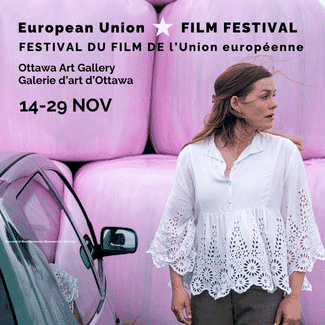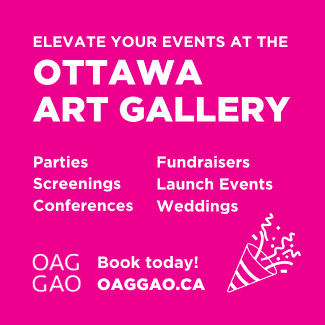“Nobody sees a flower really; it is so small.”
—Georgia O’Keeffe, An American Place exhibition catalogue, 1939
We recently attended a vernissage of a new exhibition, on at the OAG until March 31, by an art collective intricately tied to this quote and to Georgia O’Keeffe.
“In 2014, the American Modernist painter, Georgia O’Keeffe (1887–1986), made history when her painting Jimson Weed/White Flower No.1 (1932) sold for $44.4 million, quadrupling its estimated value and becoming the most expensive work by a woman artist ever sold at auction,” explains the collective. “A decade later, this record remains unbroken, continuing to motivate and challenge women artists like those of the 44.4 Mother/Artist Collective. Jimson Weed/White Flower No.1 serves as a steadfast muse, inspiring not only this new exhibition but the formation of the collective itself.”
The exhibition is a nod to the fact that the Mother of American Modernism chose her career over having children, even though she wanted them, a dilemma facing many women. Would she have made the same art if she chose to have kids? How different would it be? How would it alter her legacy? In Nobody Sees a Flower, the 44.4 Mother/Artist Collective presents a collection of work informed by O’Keeffe’s legacy, engaging with her poignant quote.
The works on display vary widely, exploring the internal and societal pressures women feel about motherhood and reflecting on personal experiences. Throughout the three floors of the gallery, we see everything from jars of socks, photography, and interactive frames to fine acrylic paint and textile works. Moira Power curated the exhibition, which investigates the intersection of Mother and Artist. After attending the vernissage and artist talk, we had a lot of philosophical questions: Does being a mother change the fact you are an artist? After the kids grow up, are you still a mother artist, or “only” an artist? Does being an artist need the clarification of mother? How does being a mother inform your art or change your opportunities? There are as many answers as there are caregivers.
Bridging motherhood and art, the 44.4 Collective shares knowledge, supports creative self-actualization, and empowers professional advancement. Members include Sarah Anderson, Jennifer Cherniack, Rebecca Clouâtre, Sarah Jane Estabrooks, Greta Grip, Sayward Johnson, Alexa Mazzarello, Andrea Mueller, Kristine Nyborg,Lucie Raymond, and Victoria Solan. Most of the artists had works in this exhibition.

Thorn Apple by Rebecca Clouâtre. Photo: Alexa Mazzarello.
Thorn Apple by Rebecca Clouâtre features three fruits, each symbolizing three generations of women in the family. The piece is centred on the artist’s mother’s endometriosis, an under- and misdiagnosed disease due to stereotypes about women.

Work by Jennifer Cherniack. Photo: Alexa Mazzarello.
This work by Jennifer Cherniack includes wallpaper and merchandise mirroring commonly available items in museum gift shops. It explores the realm of ubiquitous art—a work that is rarely experienced in real life, like van Gogh’s The Starry Night, but massively consumed through reproduction.
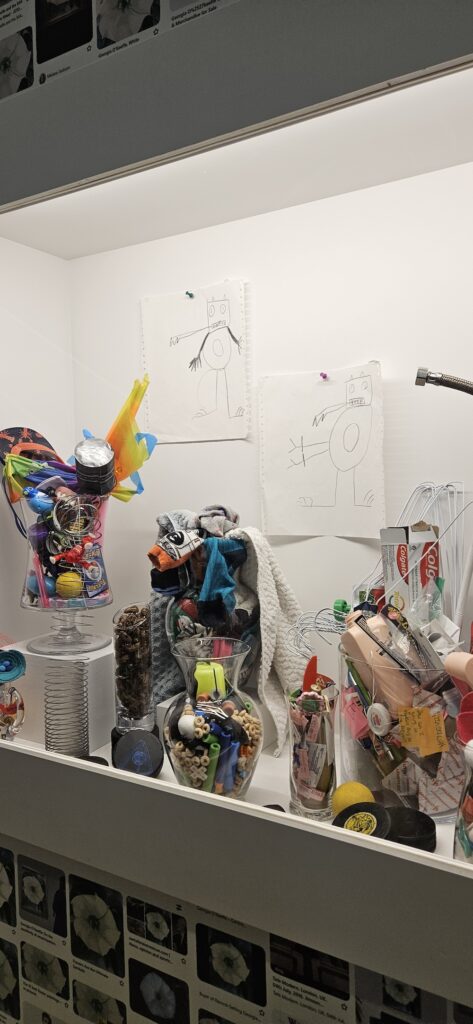
I’ll Do It This Afternoon by Sarah Jane Estabrooks. Photo: Sonya Gankina.
This collection of found objects (the jar of cockroaches is particularly jarring) explores a home’s clutter, to which children and men often contribute. Perhaps a question worth exploring is how can women and mothers not assume the role of the cleaner and begrudgingly do it, but work in tandem with (hopefully supportive) partners and communicate for an equal household where everyone is respected and no one uses weaponized incompetence? And how can men share the mental load and not just say “Tell me what to do and I’ll do it”?
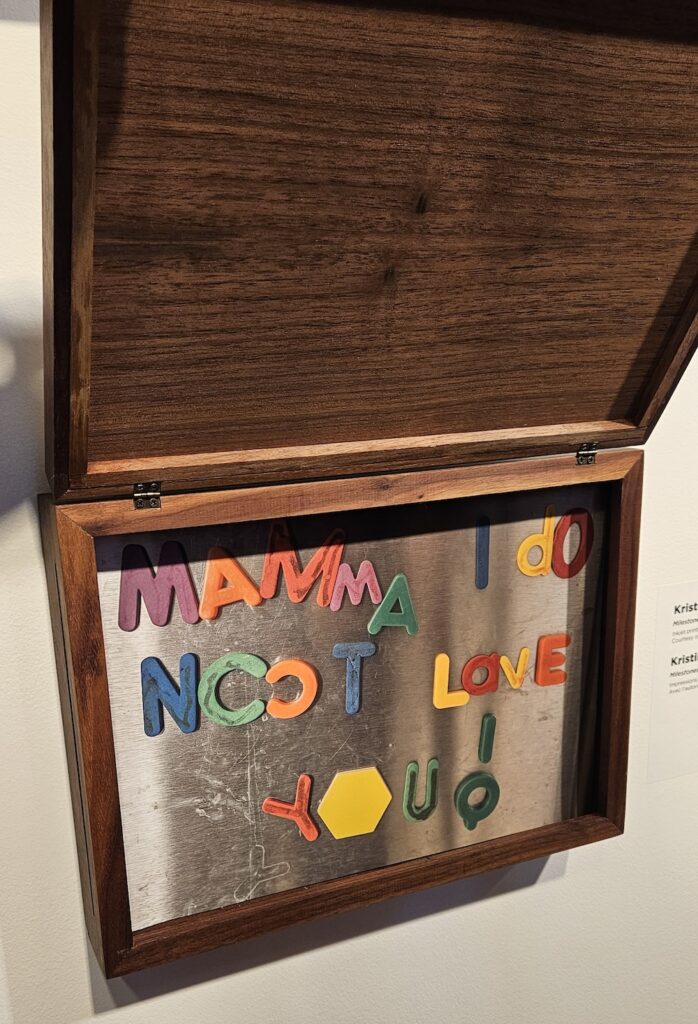
Work by Kristine Nyborg. Photo: Alexa Mazzarello www.alexamazzarello.com.
This next piece is a collection of photographs by Kristine Nyborg—on the front of the frame is an idyllic picture of family life as you might see on Instagram, and underneath is real life, like this wonderful display of affection…
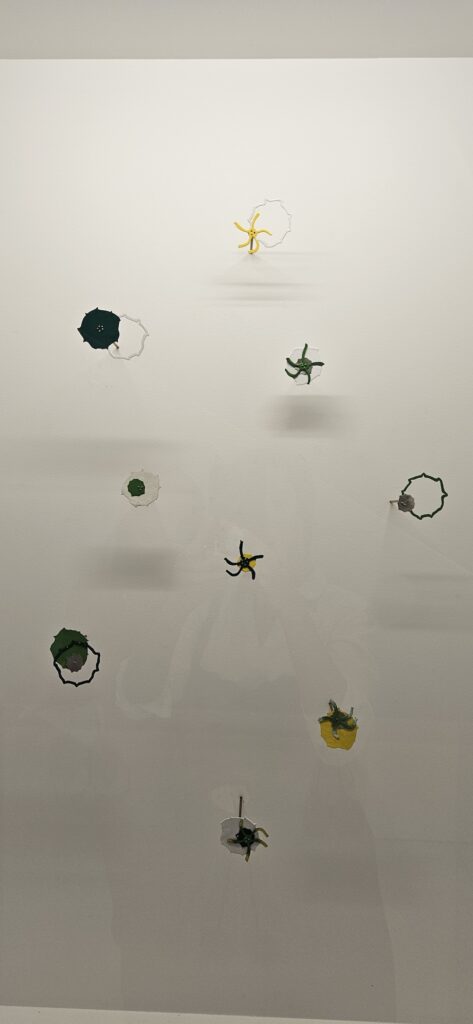
UNFURL by Andrea Mueller. Photo: Sonya Gankina.
This delightful deconstruction of O’Keeffe’s flower is by fine jeweller Andrea Mueller. Each brooch represents a different stage of the blooming cycle of jimsonweed.
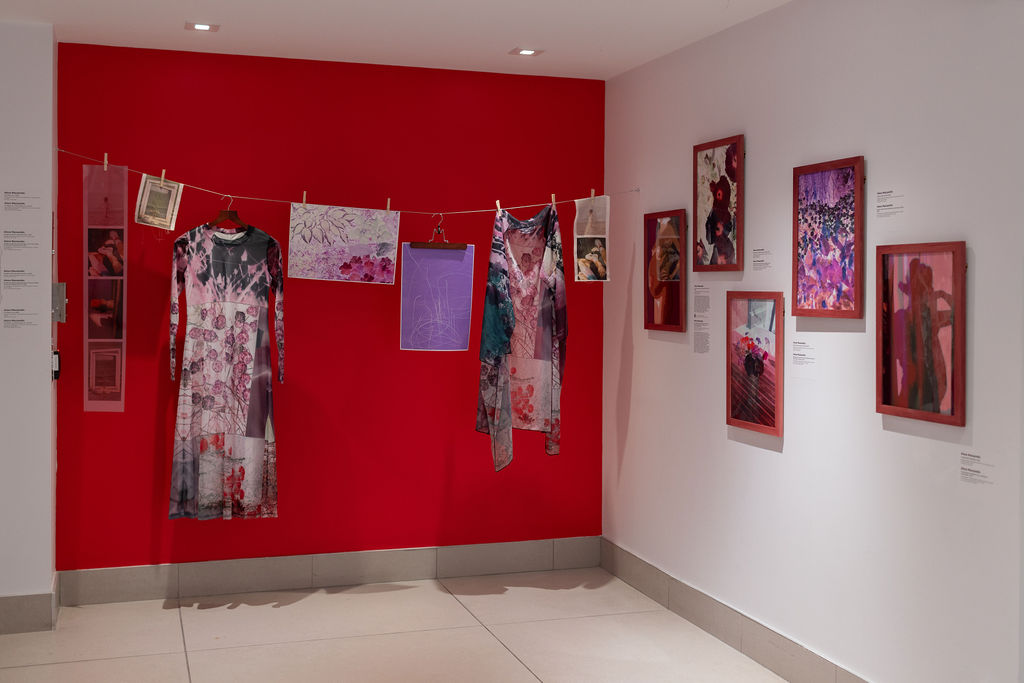
Work and Photo: Alexa Mazzarello.
A professional photographer, Alexa Mazzarello modified her images to resemble paintings, aptly titling each one with a phrase she heard while pregnant, including “Your husband cannot come into the delivery room,” and “Enjoy it while it lasts.” Exploring her first pregnancy and traumatic birth, she worked on the collection while pregnant with her second child. Inspired by O’Keeffe’s flower motifs and textile work, Mazzarello created dresses using patterns from her own photos and altering their original colours for pinks and purples.
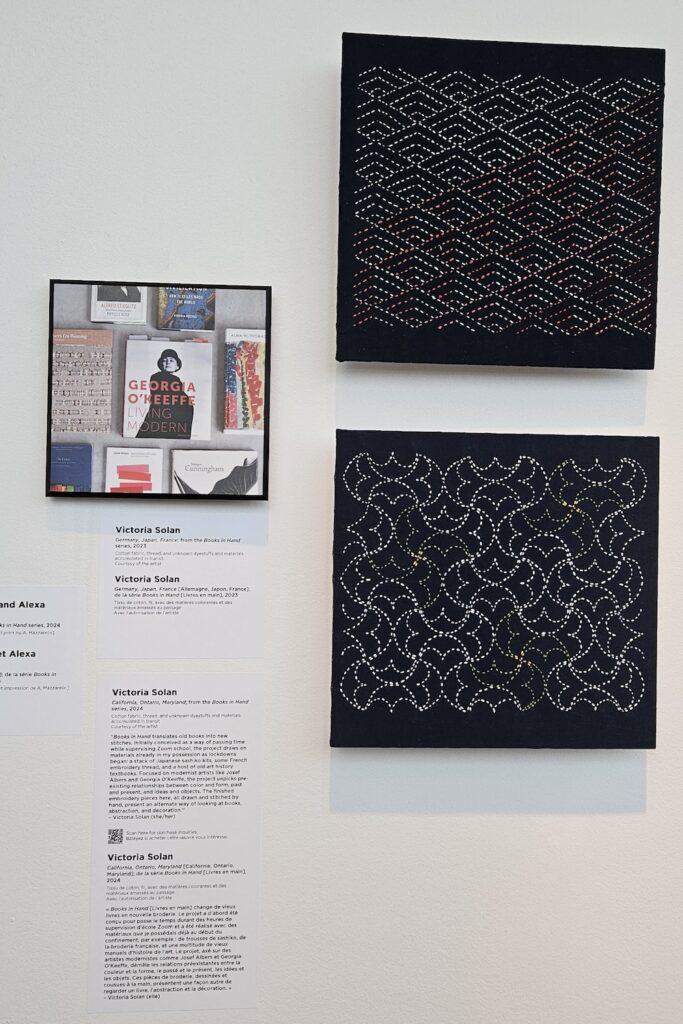
Work by Victoria Solan. Photo: Sonya Gankina.
Initially, Victoria Solan began embroidering as a way to pass the time during COVID-19. Then she dove deep into the project, combining a stack of Japanese sashiko kits, French embroidery thread, and old art history books. The finished patterns explore modern art from O’Keeffe, abstract artist Josef Albers, decoration, and a new way to look at books.

Dear Georgia by Sayward Johnson. Photo: Alexa Mazzarello.
This work by Sayward Johnson was created using traditional textile techniques while exploring the anatomical nature of the flower. “Here, the flower and motherhood are synonymous; a mother fully understands the immersive and transformative experience of becoming someone’s entire world. The flower’s knitted shadows reference the transient nature of time, and mothers, past,” says Johnson.

Nobody Sees by Greta Grip. Photo: Alexa Mazzarello.
Greta Grip uses the traditionally female activity of knitting to layer fabric, colours, and questions: is a mother or mother artist valued or seen? and leaving the viewer room for interpretation.
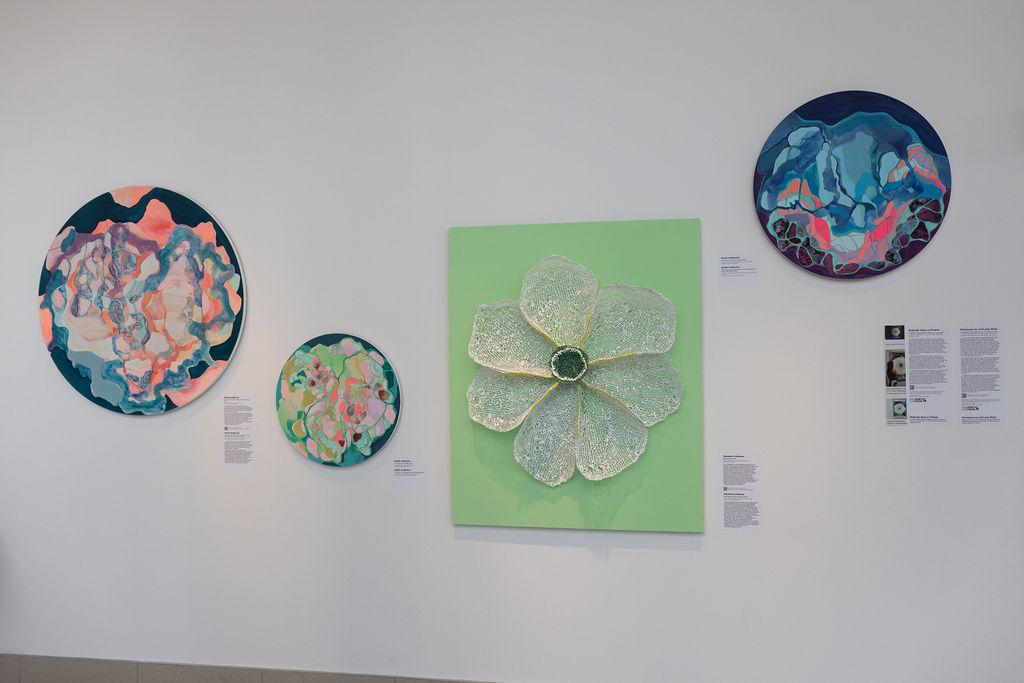
Yesterday I Would Have Seen a Different Flower by Sarah Anderson. Photo: Alexa Mazzarello.
The circular acrylic works by Sarah Anderson explore the theme of externalization—how teens manage their feelings by getting their parents to feel something on their behalf. Hiding flowers in her abstract paintings, Anderson considers how nobody sees the internalization of additional anxiety on top of her own that she receives from her children.

Moonflower by Lucie Raymond. Photo: Alexa Mazzarello.
Moonflower by Lucie Raymond is a delightfully textural work that contrasts the beauty of jimsonweed with its poisonous nature. And it only blooms at night! The moon-like backdrop of the piece symbolizes both the toxicity of the flower and its ideal conditions for blossoming.
Learn more about the Nobody Sees a Flower exhibition here. It’s on at the OAG until March 31.








